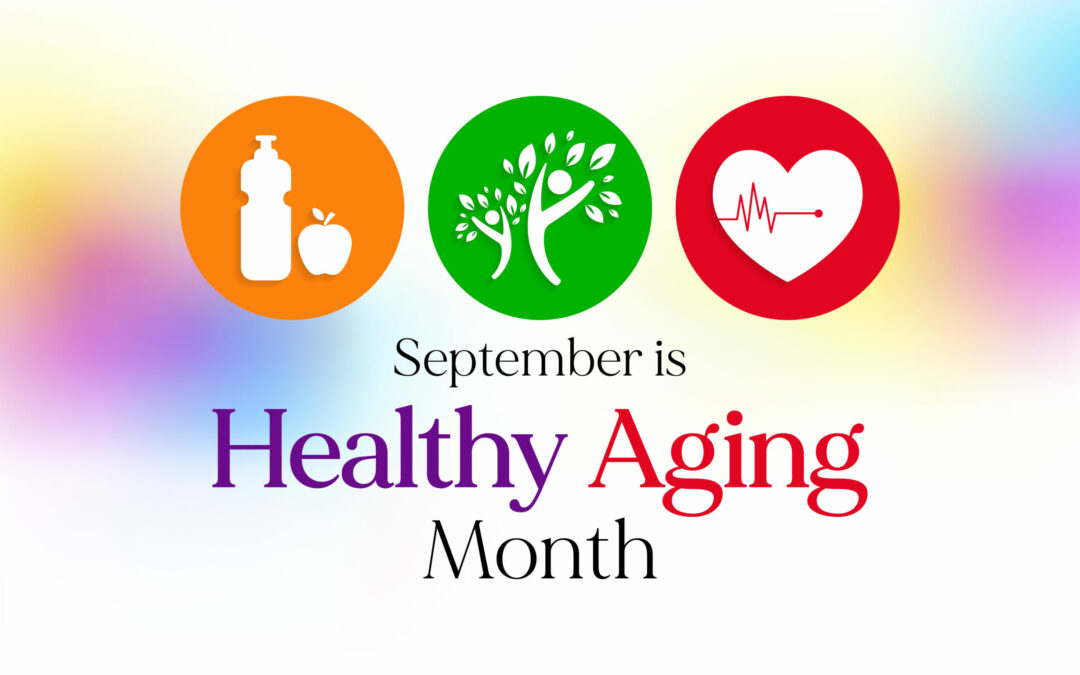
by Nietling Admin | Sep 13, 2023 | Eye Care, Nietling News
One in six Americans age 65 and older have a vision impairment that cannot be corrected with glasses or contact lenses. The risk of eye disease increases with age, yet many older adults neglect to see an ophthalmologist for care. To bring attention to taking care of our eyes as we age, the American Academy of Ophthalmology celebrates Healthy Aging Month to raise awareness of the signs and symptoms of vision loss – and steps to help seniors take care of their sight.

by Nietling Admin | Jul 10, 2023 | Eye Care, Nietling News
Studies show that long-term exposure to bright sunlight may increase the risk of cataracts and growths on the eye, including cancer. UV rays reflected off sand and water can cause eyes to sunburn, potentially resulting in temporary blindness in just a few hours. In support of UV Safety Month this July, the American Academy of Ophthalmology reminds the public of the importance of shielding eyes from the sun’s harmful rays with 100% UV-blocking sunglasses and broad-brimmed hats.

by Nietling Admin | Jun 10, 2023 | Cataracts, Nietling News
Americans spend hundreds of millions of dollars annually on consumer fireworks, which cause more than 9,000 injuries a year. With the Fourth of July holiday just weeks away, the American Academy of Ophthalmology is reminding the public that fireworks are not toys but incendiary devices that can cause devastating eye injuries.
Cataract is one of the leading causes of blindness in the United States. If not treated, cataracts can lead to blindness. In addition, the longer cataracts are left untreated, the more difficult it can be to successfully remove the cataract and restore vision. During Cataract Awareness Month in June, the American Academy of Ophthalmology reminds the public that early detection and treatment of cataracts is critical to preserving sight.
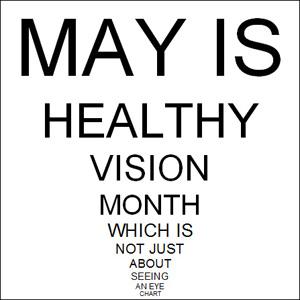
by Nietling Admin | May 3, 2023 | Eye Care, Nietling News
Approximately 37 million adults in America have age-related macular degeneration, cataract, diabetic retinopathy, or glaucoma, all of which can cause visual impairment or blindness. However, recent studies show that making healthy choices and getting regular eye exams can help reduce a person’s risk of vision loss. In support of Healthy Vision Month in May, the American Academy of Ophthalmology is encouraging everyone to take charge of their eye health and preserve their sight by following some simple tips.
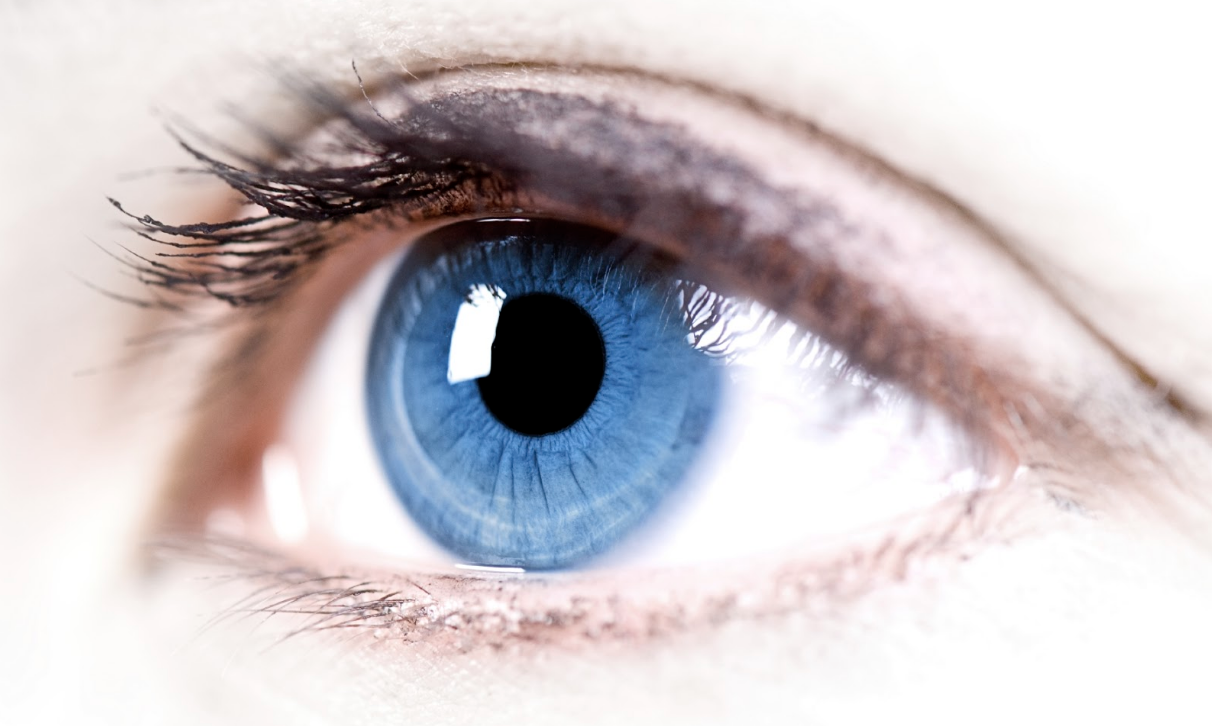
by Nietling Admin | Apr 25, 2019 | Diabetes, Nietling News
For those of us whom have diabetes, friends that are diabetic or a family history of the disease it is important to know how the disease can affect our vision and eye health. To better understand diabetes in our eyes, first, we must know what is diabetes? Diabetes is a chronic condition that results in too much sugar in the blood. This high blood glucose level over time will weaken and cause changes in the small blood vessels inside your eyes that nourish your retina. These changes cause blood to leak out of the retinal blood vessels; this bleeding can seriously affect your vision, when this occurs, you are then diagnosed with Diabetic Retinopathy. If left untreated Diabetic Retinopathy can cause blindness. Early diagnosis and treatment is an essential key to prevent loss of vision due to Diabetic Retinopathy.
So, how does your eye doctor detect Diabetic Retinopathy? Your optometrist gets to know you, your family history and your personal vision needs through a comprehensive eye examination. It is important to have an annual dilation done by a doctor of optometry if you are a diabetic or have a family history of the medical condition. During this annual in-depth exam, you doctor uses a tool called an ophthalmoscope to look inside your eye through the dilated pupil. This allows your doctor to light up and magnify the inside of the eye. Also, retinal imaging or photographs may be obtained to document and gather even more information about your eye.
What should you look for as a diabetic patient? Beginning stages of Diabetic retinopathy may appear as blurry central or peripheral vision, whereas, you may not notice any symptoms at all. These changes in vision depend on where the bleeding is taking place in your eye. As this ocular disease progresses, you may notice a cloudiness in your vision, blind spots and floaters. Each stage of this disease causes more damage to your eye and the visual symptoms worsen as well. You may experience addition distortion in all ranges of vision and can progress into blindness. When needed there are treatments available that can slow down the progression of diabetic retinopathy. Your eye doctor can recommend a retina specialist for this level of treatment.
As a diabetic patient, the best thing you can do is take steps in your daily living to help prevent the development of Diabetic Retinopathy. By doing so, you are improving your chances to enjoy a lifetime of good vision and health.
Simple Steps for Diabetic Retinopathy Prevention:
- Take your prescribed medication as instructed
- Follow a proper diet
- Exercise regularly
- Have a Comprehensive Dilated Eye Exam done annually
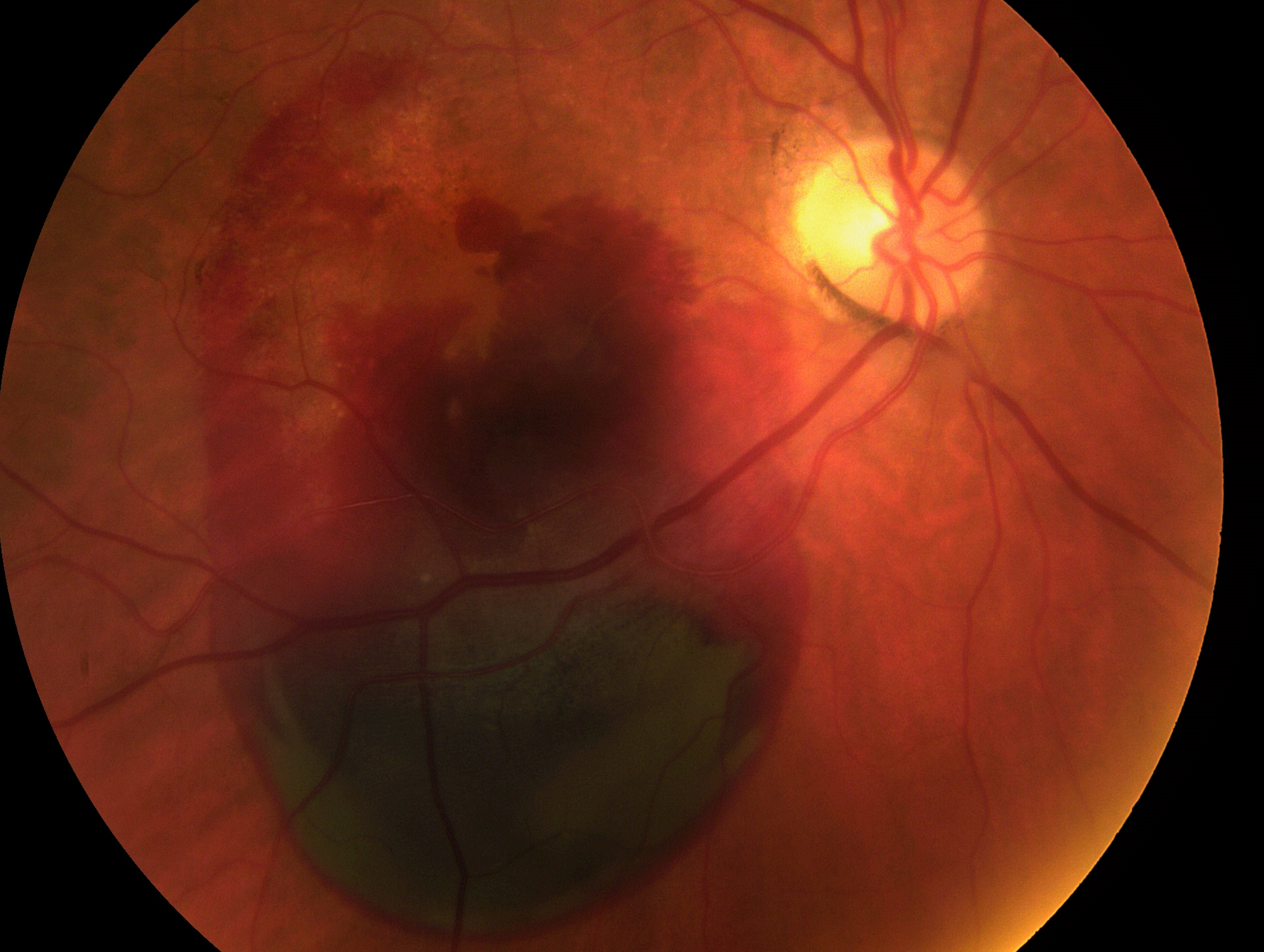
by Nietling Admin | Mar 13, 2019 | Macular Degeneration
How many of us actually know what the macula is or what is does? To better understand the ocular disease Macular Degeneration let’s take a look at this important part of the retina. The macula is the center of the retina and is responsible for providing us with our central vision. Central vision is what we see detail with; it allows us to see the fine print, small objects, color and gives us depth perception. Without our macula 3-D movies could not be appreciated and we would have problems judging distances. So now that we know what it is, why should you be concerned with Macular Degeneration?
Macular Degeneration is a complex eye disease that causes deterioration of the macula cells. Macular Degeneration can be linked to intricate interactions of both environmental and genetic factors. While the exact cause is unknown, evidence suggests that certain key factors such as; sunlight exposure majorly ultraviolet light, high energy blue light exposure from cell phones computer screens, smoking, alcohol use and diets low in carotenoids can increase a person’s likelihood of developing this disease.
There are two forms of Macular Degeneration Wet and Dry. These diseases are considered the leading cause of vision loss in individuals over the age of 50. Case studies also show that they are the leading cause in permanent visual impairment in the United States. Only a comprehensive eye exam can determine if you have Macular Degeneration. Below we’ll list some common symptoms related to Macular Degeneration, but remember these symptoms may also be indicators of other eye health problems. So if you are experiencing any of these please contact a doctor of optometry as soon as possible.
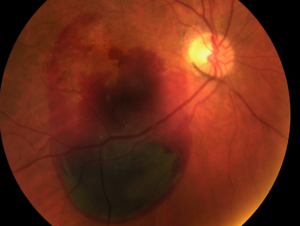
Age Related Macular Degeneration
Signs and Symptoms of Macular Degeneration:
- Gradual loss of the ability to see objects clearly
- Objects appear to be distorted in shape
- Straight line appear wavy or crooked
- Gradual loss of color vision
- A dark or empty area appearing in the center of vision








